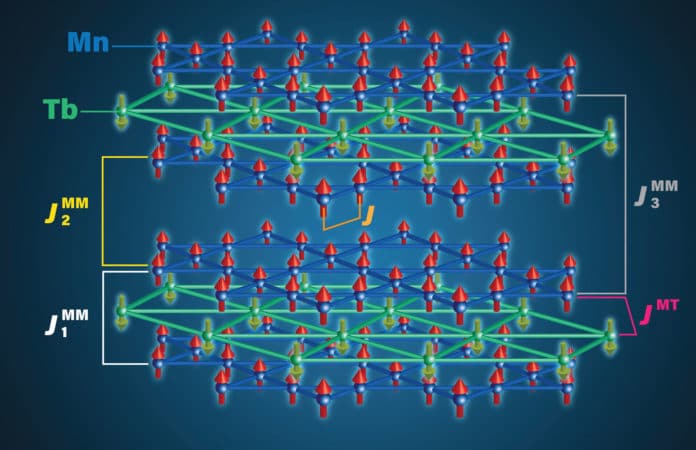Kagome’s are a material whose structure is named after a traditional Japanese basket weaving technique. The weaving creates a pattern of hexagons bordered by triangles and vice versa. In Kagome metals, the atom configuration mimics the weaving pattern. This property causes the electrons in the substance to behave differently.
Scientists from the U.S. Department of Energy’s Ames National Laboratory and Oak Ridge National Laboratory have recently discovered magnetic interactions in the Kagome layered topological magnet TbMn6Sn6. The discovery could lead to customizing how electrons flow through these materials.
Scientists conducted an in-depth investigation of TbMn6Sn6 to understand the material and its magnetic characteristics better. These results could impact future technological advancements in quantum computing, magnetic storage media, and high-precision sensors.
Rob McQueeney, a scientist at Ames Lab and the project leader, explained that topological materials said, “Using magnetic atoms to construct the lattice of these materials, such as Mn in TbMn6Sn6, can further help induce topological features. They have a special property where under the influence of magnetism, you can get currents that flow on the edge of the material, which are dissipationless, which means that the electrons don’t scatter, and they don’t dissipate energy.”
Scientists, in particular, determined the magnetism in TbMn6Sn6. For their analysis, they used calculations and neutron scattering data collected from the Oak Ridge Spallation Neutron Source to conduct their analysis.
Simon Riberolles, a postdoc research associate at Ames Lab and project team member, explained, “The experimental technique the team used. The technique involves a beam of neutron particles used to test how rigid the magnetic order is. The nature and strength of the different magnetic interactions present in the materials can all be mapped out using this technique.”
McQueeney said, “TbMn6Sn6 has competing interactions between the layers or frustrated magnetism. “So the system has to make a compromise. Usually, that means that if you poke at it, you can get it to do different things. But we found out in this material that even though those competing interactions are there, other interactions are dominant.”
Riberolles said, “This is the first detailed investigation of the magnetic properties of TbMn6Sn6 to be published. In research, it’s always exciting when you figure out you understand something new, or you measure something that has not been seen before, or was understood partially or differently.”
McQueeney and Riberolles explained that their findings suggest the material could be adjusted for specific magnetic characteristics, for example, by changing the Tb for a different rare earth element, which would change the compound’s magnetism. This fundamental research paves the way for continued advances in Kagome metals discovery.
Journal Reference:
- S. X. M. Riberolles et al., Low-Temperature Competing Magnetic Energy Scales in the Topological Ferrimagnet TbMn6Sn6, Physical Review X (2022). DOI: 10.1103/PhysRevX.12.021043
